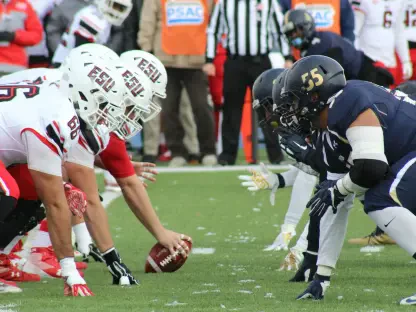Imagine a classroom where the walls are endless stretches of sand, the ceiling is a vast blue sky, and the lessons are taught by the rhythmic crashing of waves against the shore, creating a unique educational experience. This is not a daydream but a reality for thousands of students who participate in an annual educational summit hosted by a prominent environmental organization at Island Beach State Park in New Jersey. For decades, this initiative has turned the coastal landscape into a dynamic learning environment, where young minds engage directly with nature. Far from the confines of traditional school settings, students explore critical environmental issues through hands-on activities and real-world interactions. This unique approach not only makes complex topics accessible but also ignites a passion for conservation that textbooks alone cannot achieve. The beach becomes more than a backdrop; it is an active participant in shaping the next generation of environmental stewards.
The Power of Experiential Education
Immersing Students in Nature’s Lessons
At the heart of this coastal educational experience is the belief that learning by doing leaves a lasting impact. Students from schools across New Jersey arrive at the beach, not with notebooks and pens, but with curiosity and a readiness to explore the natural world. Guided by environmental experts and older peers, they dive into activities that bring abstract concepts to life. From observing tiny terrapins to examining marine life remnants during guided nature walks, every moment is a chance to connect with the ecosystem. These interactions reveal the fragility and beauty of coastal environments, making lessons about pollution and habitat preservation far more tangible than any lecture could. The beach setting strips away the barriers of a conventional classroom, allowing students to physically and emotionally engage with the subject matter in a way that fosters deeper understanding and retention.
Turning Theory into Action
Beyond mere observation, the beach classroom emphasizes active participation to cement learning. Students tackle real environmental challenges through practical exercises, such as studying how rainwater washes litter into waterways, illustrating the concept of nonpoint source pollution. This hands-on approach transforms theoretical knowledge into actionable insights, as they see firsthand the consequences of human activity on nature. Whether it’s identifying shells or analyzing the impact of debris on wildlife, each task encourages critical thinking and problem-solving skills. The immersive environment also sparks emotional responses, as the sight of polluted shorelines or struggling marine life drives home the urgency of conservation. By engaging multiple senses, this method ensures that students not only learn about environmental issues but also feel compelled to address them in their daily lives.
Collaboration and Community Impact
Partnerships That Enrich Learning
A key strength of this beach-based summit lies in the collaboration with various environmental groups, each bringing specialized knowledge to the table. Organizations focusing on water quality, marine mammal strandings, and coastal ecosystems design programs that offer students diverse perspectives on environmental science. Through activities like seining for aquatic life, scavenger hunts for mollusks, and lessons on identifying invasive microplastics, participants gain a comprehensive view of the challenges facing oceans today. These partnerships ensure that the curriculum is not only varied but also grounded in cutting-edge research and real-world applications. By exposing students to experts in the field, the initiative bridges the gap between academic theory and practical expertise, providing a richer, more nuanced educational experience that prepares them for future advocacy.
Fostering Peer-to-Peer Inspiration
Another vital element of this program is the role of peer-to-peer education, where older students mentor their younger counterparts with infectious enthusiasm. This dynamic creates a ripple effect of inspiration, as younger learners absorb not just facts but also a genuine passion for environmental stewardship from their peers. The interactions are often informal yet powerful, occurring during beach clean-ups or while observing wildlife together. These shared experiences build a sense of community and shared purpose among participants, reinforcing the idea that protecting the environment is a collective responsibility. Educators note that this mentorship model amplifies the impact of the summit, as students leave not only with knowledge but also with role models who demonstrate the value of active engagement. This connection across age groups nurtures a culture of care for the planet that extends beyond the event itself.
Reflecting on a Legacy of Change
Building a Foundation for Advocacy
Looking back, the student summit at Island Beach State Park stands as a testament to the transformative power of experiential learning. Over the years, countless young minds have been shaped by the raw, unfiltered lessons of the coastal environment, where every grain of sand and wave tells a story of ecological balance and human impact. The hands-on activities, from cleaning beaches to studying pollution models, have equipped students with practical skills and a profound sense of responsibility. This initiative proves that education rooted in real-world contexts can ignite a lifelong commitment to conservation, turning passive learners into active defenders of the environment.
Inspiring Future Generations
As the program’s legacy unfolds, it becomes clear that its true success lies in planting seeds of change that will grow over time. The partnerships with environmental organizations and the emphasis on peer mentorship create a blueprint for scalable, impactful education. Moving forward, expanding such initiatives to other regions and ecosystems could amplify their reach, ensuring more students experience the profound lessons only nature can teach. By investing in similar programs, communities can cultivate a generation equipped to tackle pressing environmental challenges with creativity and determination, carrying forward the mission of stewardship for years to come.









